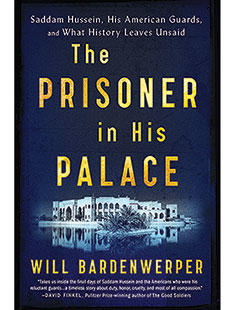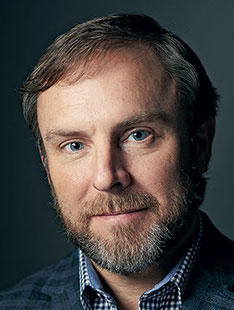
The question of how the soldiers developed a relationship with a notoriously ruthless dictator drives Will Bardenwerper ’98’s new book, The Prisoner in His Palace (Scribner), which portrays the weeks leading up to Hussein’s execution through the eyes of his guards.
“They expected to meet Hannibal Lecter, this diabolically evil killer, but that’s not the person they experienced,” Bardenwerper says in an interview. “They encountered a kindly, charming, avuncular older man who reminded a lot of them of their grandfathers.”
Bardenwerper, an Army veteran, discovered this story after he had left the military and was working for a New York Times reporter researching a book on the Iraq War.
The soldiers’ reactions to Hussein echoed Bardenwerper’s own experience as a young officer whose idealistic notions about the Iraqi conflict were quickly challenged by those he encountered in Iraq.

The Prisoner in His Palace is an unusual war story. It takes place far from the battlefield, but it nevertheless bumps up against the themes underlying many stories of war: the gradual loss of innocence and the discovery that war is a complicated, confusing affair.
The unit’s superiors had given strict orders that the prisoner be treated with care; the Bush administration didn’t want a repeat of the notorious Abu Ghraib scandal, and they believed Hussein’s death sentence would pave the way for reconciliation among Iraq’s highly fragmented populace.
But mere moments after Hussein’s body swung from its noose, his executioners — members of the Shia community, which had suffered greatly under the dictator — began abusing his body. Steve Hutchinson, one of the guards, had seen his role “as participating in an ugly, but noble, mission,” Bardenwerper says. Hutchinson was disillusioned by how quickly the goal of peace devolved into sectarian violence. “What that experience basically illustrated to him was: ‘What was this all for? Why did I work so hard to do the right thing, only to see it all evaporate?’” Hutchinson, a seasoned combat veteran, ultimately quit the Army because of his experiences.
Bardenwerper makes no judgments about the guards’ relationship with the cruel dictator who had terrorized his own people, nor does he believe Hussein ever repented his actions. Rather, Bardenwerper believes Hussein remained convinced his iron-fisted leadership had been necessary to keep Iraq stable.
“On more than one occasion he told interrogators and the guards, essentially: ‘You guys don’t know what you’re getting into. … You will wish you had me back,” Bardenwerper says. “This was, of course, all a part of his extreme narcissism, but at the same time the last 14 years haven’t exactly proven him wrong.”












No responses yet